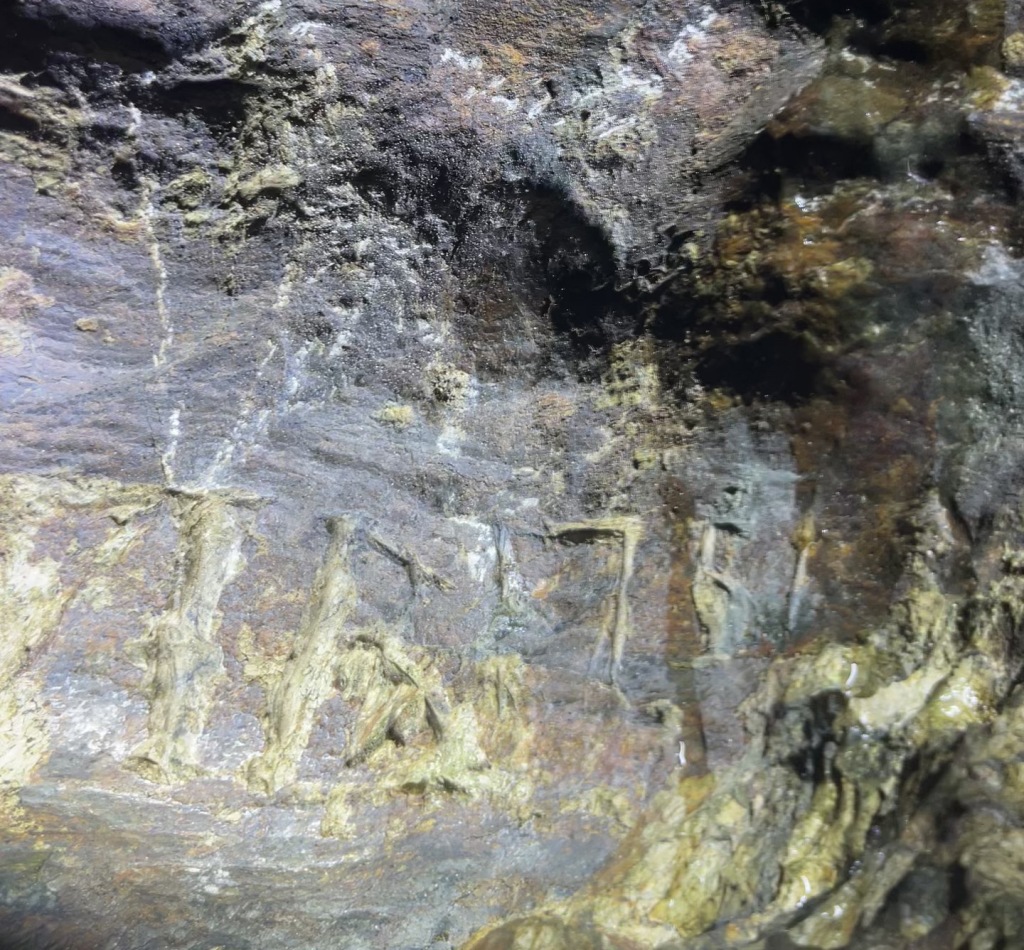Down below the Castle, which was built by Henry III, two paths merge, and there you find Bensons Cave. It is believed this cave is about the same age as the Castle. It bears the name Bensons Cave, from the notorious Devon MP. Who In 1747 obtained a contract from the Government to transport English convicts to America, instead he shipped them to Lundy and used them a slave labourers.
The cave is 19m long, 2m wide and 4m high. The walls of the Cave have inscriptions, some dating back to the 1800’s, a time when Benson would have been carrying out illicit activities. There are many historical graffiti marks in the caves, including initials using the 18c J which is an I with crossbars.
According to Langham (1994) Examinations have revealed around thirty-seven inscriptions, some of the clearest readings are dated between 1709-1761.

The cave includes historical witch marks. Reed (2107) quotes that ‘Witches marks, also known as Apotropaic Marks (Greek apotrepein “to warn off” from apo- “away” and trepein “to turn”) or Ritual Protection Symbols can be found in medieval buildings dating from 1550 to 1750. They were scratched onto almost any part of a building to keep witches away, more often those places that witches were believed to enter i.e fireplaces, door ways and windows.’
The National Trust state that ‘Despite their name, witch marks have very little to do with witches or witchcraft. The markings are believed to have turned away evil, providing protection to the building and those who lived or worked within it.’

The WitchMark discovered in Benson’s Cave serves as a compelling example among many. Engaging with these marks through tactile exploration, such as tracing with a finger or creating rubbings, forges a more profound connection with their material essence. Notably, the historical marks, etched deeper into the rock with precision tools, stand in stark contrast to the shallower, scratched graffiti of more recent origin.
You can visit the cave. although access is a little tricky if you dont like going near the edge. It is always best to check the weather especially the wind direction as it is perched on the South End of the island.
References
Insight: Witches Marks: Part One (2017). [Online]. Available at https://www.vincentreed.com/witch-craft-marks/. [Accessed on 15/12/2023]
Langham, A. F., (1994). The Island of Lundy. Alan Sutton.
Mysteries of historical graffiti (no date). [Online]. Available at https://www.nationaltrust.org.uk/our-cause/history-heritage/archaeology/mysteries-of-historical-graffiti. [Accessed on 15/12/2023]
